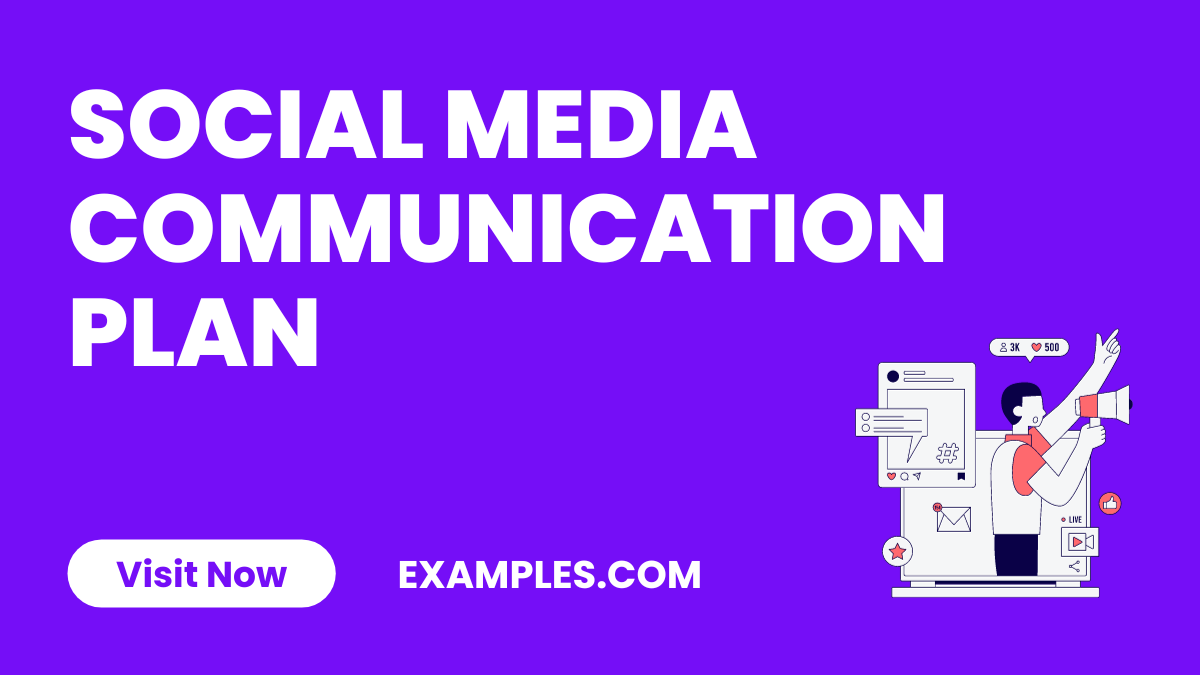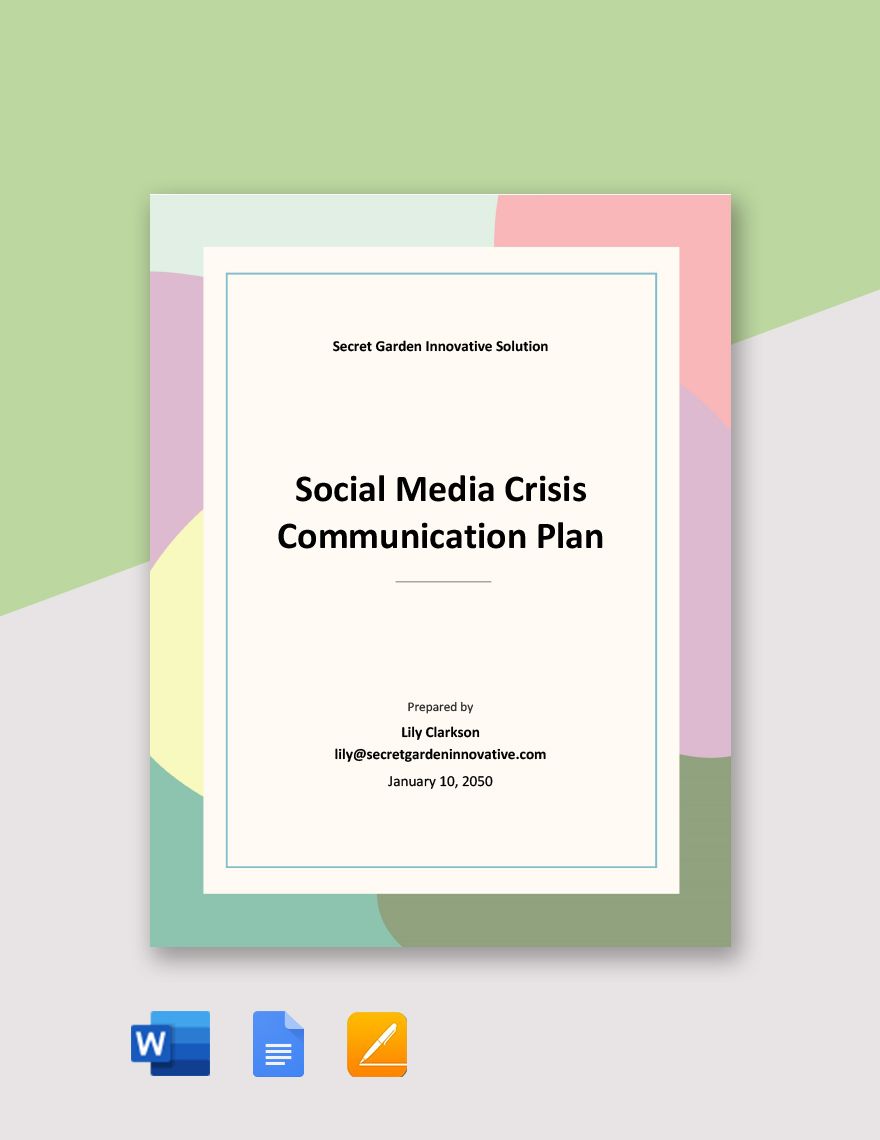5+ Social Media Communication Plan Examples
Discover the essentials of a Social Media Communication Plan in this comprehensive guide. Delve into effective strategies, understand the pivotal role of clear messaging, and explore real-world Communication Examples. Whether you’re looking to enhance engagement, build a stronger brand presence, or navigate the complexities of online interactions, this guide offers invaluable insights and practical solutions tailored for success in today’s digital landscape. Enhance your social media strategy with expert advice and proven techniques.
Download Social Media Communication Plan Bundle
Social Media Communication Plan
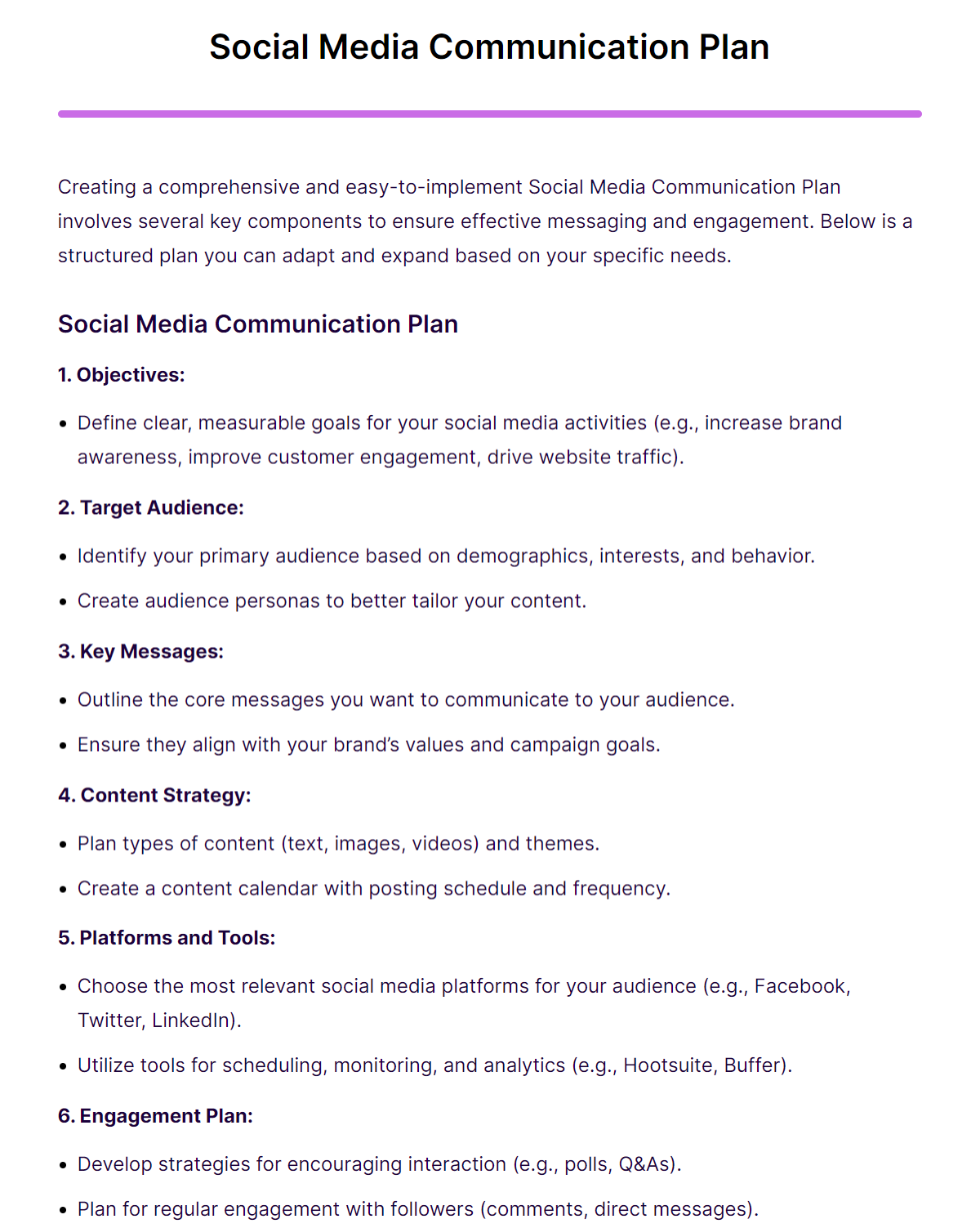
The Social Media Communication Plan tailored to individual organizational needs. It covers defining clear objectives, understanding the target audience, crafting key messages, developing content strategies, and selecting appropriate platforms. Additionally, it emphasizes the importance of engagement, crisis management plan, monitoring, and analytics, along with assigning team roles and budgeting. The plan also highlights the use of visual elements like content calendars and performance dashboards, underscoring the importance of regular review and adaptation for effective communication.
Social Media Crisis Communication Plan
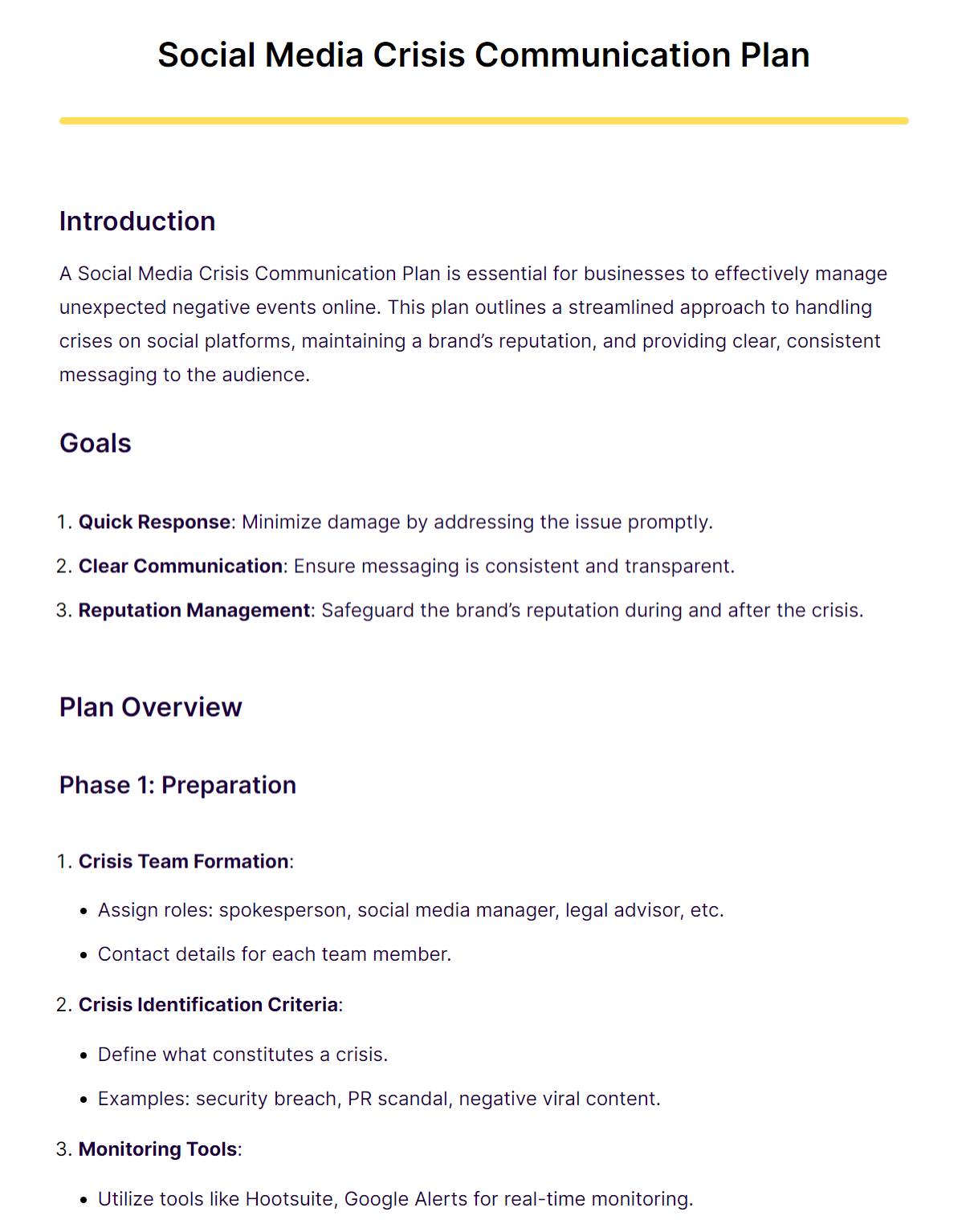
The Social Media Crisis Communication Plan. It emphasizes the importance of quick response, clear communication, and reputation management during crises. The plan is broken down into four phases: Preparation, including team formation and crisis identification; Identification & Assessment, focusing on crisis detection and internal communication plan; Response, detailing official statements and channel strategies; and Recovery & Analysis, involving follow-up communications and effectiveness evaluation. Additionally, it offers templates for crisis responses and recommends tools like Hootsuite and Google Alerts for monitoring. The plan, designed for ready implementation, highlights the significance of regular updates and team training.
Social Media Marketing Communication Plan
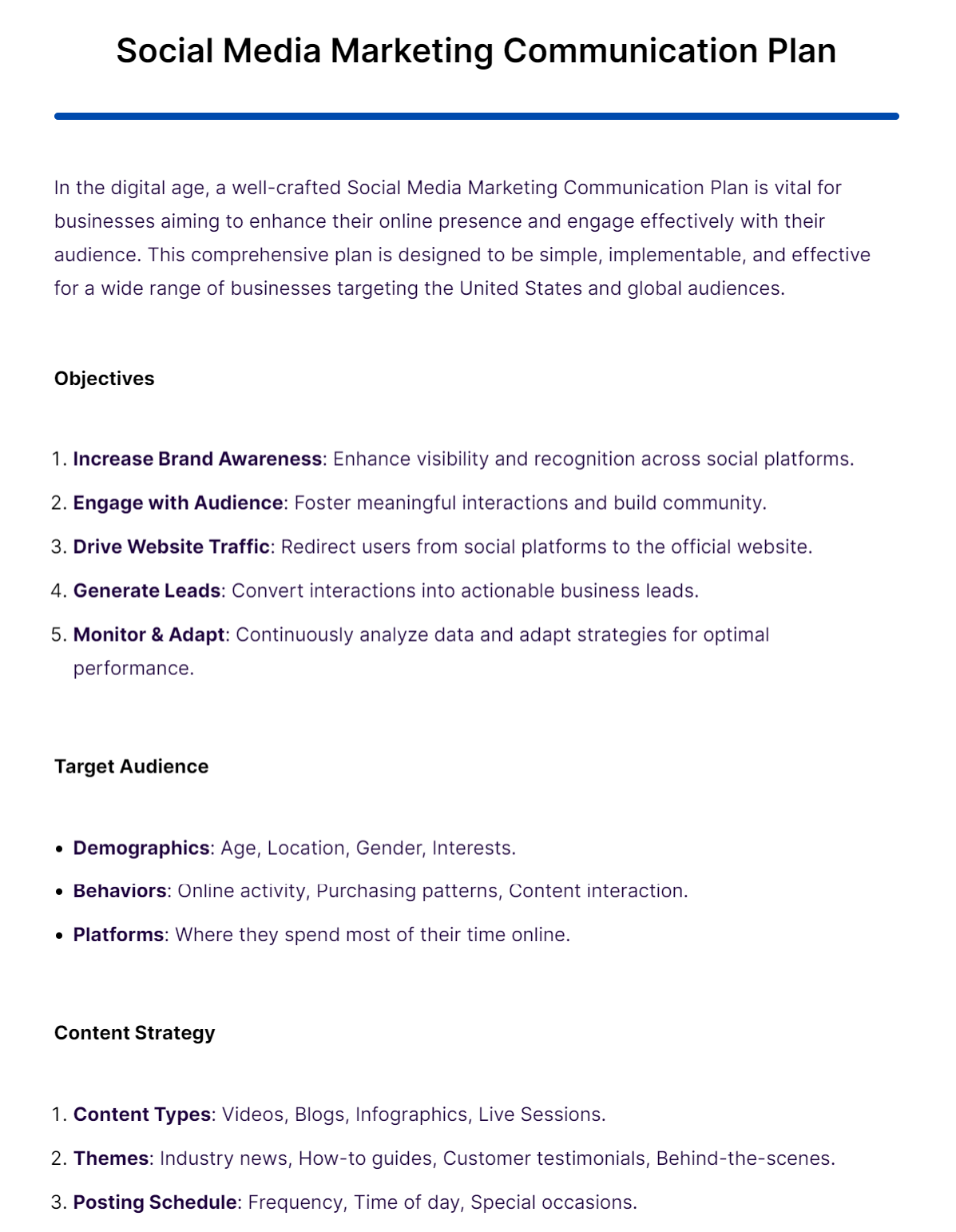
The Social Media Marketing Communication Plan is a comprehensive guide for businesses to enhance their online presence. It covers strategies for increasing brand awareness, audience engagement, and lead generation through targeted content on various platforms like Facebook, Instagram, Twitter, LinkedIn, and YouTube. The plan includes detailed content and platform strategies, implementation steps, monitoring and analysis methods, crisis management, budget allocation, and adaptability to the digital landscape. It’s a dynamic roadmap for effective social media marketing tailored for both U.S. and global audiences.
Social Media Crisis Communication Plan Template in Word, Google Docs, PDF, Apple Pages
Social Media Communications Plan Example
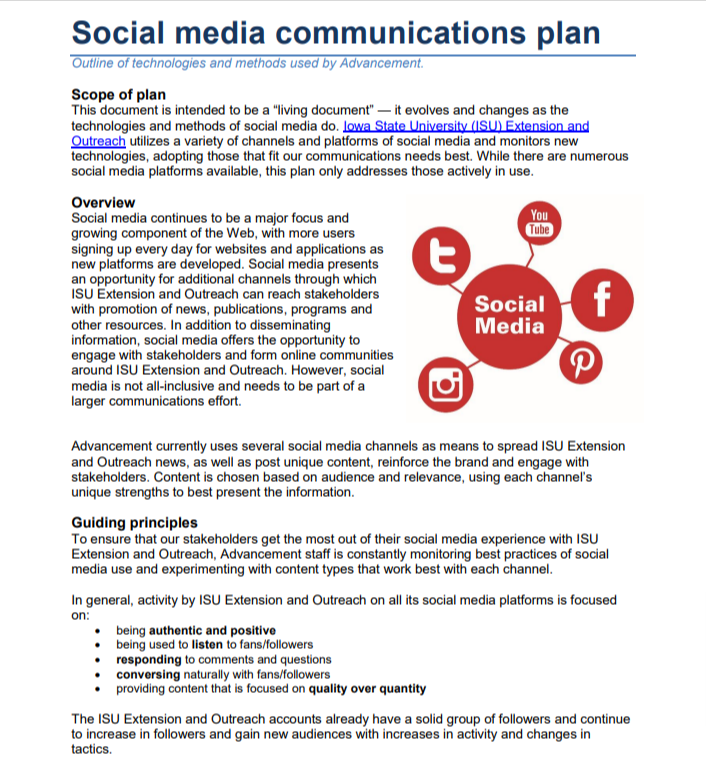
extension.iastate.edu
DownloadSocial Media Communication Plan Strategy Template
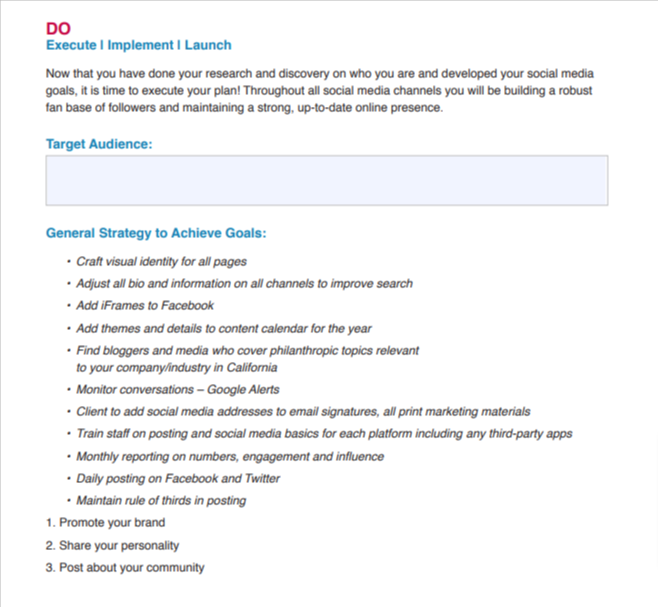
uptownstudios.net
DownloadSocial Media Communications Strategy Worksheet

drexel.edu
DownloadSteps to Create Social Media Communication Communication Strategies:
Exploring Social Media Communication Strategies is pivotal for engaging effectively with your audience. This involves selecting the right channels, crafting compelling content, and employing tactics that resonate with your target demographic. An effective strategy enhances brand presence, fosters engagement, and drives your communication goals forward.
1. Personalized Messaging
Explanation: Tailor your messages to address the specific needs and interests of your audience, making them feel valued and understood.
Hi [Name], we noticed you enjoy [Interest]! Check out our latest [Product/Service] tailored just for you!
2. Interactive Content
Explanation: Engage your audience with content that prompts them to interact, such as polls, quizzes, or questions.
What’s your favorite feature of our product? Vote below and let us know why in the comments!
3. Visual Storytelling
Explanation: Use images, videos, and infographics to tell stories that captivate your audience and convey your message effectively.
Watch our journey from a simple idea to a leading brand. Your support brings our story to life!
4. User-Generated Content
Explanation: Encourage your followers to share their own content related to your brand, which can enhance credibility and community feeling.
Share your experience with our product using #OurBrandStory and get featured on our page!
5. Hashtag Campaigns
Explanation: Create unique, brand-specific hashtags to make your content easily discoverable and encourage sharing.
Join the conversation with #BrandChallenge and tell us how you overcome daily obstacles!
6. Direct Engagement
Explanation: Respond to comments, messages, and mentions promptly to build a relationship and show that your brand values its audience.
Thanks for your feedback, [Name]! We’re thrilled you loved our service. Stay tuned for more updates!
7. Influencer Partnerships
Explanation: Collaborate with influencers who resonate with your brand to expand your reach and credibility.
We’ve teamed up with [Influencer] to bring you an exciting look at our latest product. Check it out!
8. Educational Content
Explanation: Share valuable information, tips, and guides that position your brand as a knowledgeable authority in your field.
Did you know [Interesting Fact]? Stay informed with our weekly insights on [Topic].
9. Real-Time Updates
Explanation: Keep your audience informed with live updates about events, product launches, or any breaking news related to your brand.
We’re going live in 10 minutes to unveil something BIG. Tune in to be the first to know!
10. Community Building
Explanation: Foster a sense of community by creating spaces for your audience to connect, share, and discuss topics relevant to your brand.
Join our [Brand] Community Group to connect with fellow enthusiasts and share your stories.
How to Write a Social Media Communication Plan?
Crafting an effective Social Media Communication Plan is essential for navigating the dynamic landscape of online platforms. By following a structured approach, you can ensure your social media efforts are consistent, impactful, and aligned with your overall objectives. Here’s a comprehensive guide to help you create a plan that’s both strategic and actionable.
1. Set Clear Objectives:
- Understand Your Goals: Define what you aim to achieve with your social media presence. Whether it’s increasing brand awareness, driving sales, or engaging with your community, clear objectives will guide your strategy.
- SMART Goals: Ensure your goals are Specific, Measurable, Achievable, Relevant, and Time-bound.
2. Identify Your Audience:
- Audience Research: Understand who your audience is, their behaviors, preferences, and needs. This information will shape your content and engagement strategies.
- Create Personas: Develop detailed profiles for different segments of your audience to tailor your messages effectively.
3. Develop Your Message:
- Core Messages: Determine the key themes and messages that represent your brand and resonate with your audience.
- Voice and Tone: Establish a consistent voice and tone that reflects your brand personality and appeals to your target audience.
4. Choose the Right Platforms:
- Platform Research: Not all social media platforms are suitable for every business. Choose platforms where your target audience is most active and engaged.
- Competitor Analysis: Understand where your competitors are successful and identify opportunities to differentiate your brand.
5. Plan Your Content:
- Content Types: Decide on the mix of content types (e.g., blog posts, videos, infographics) that will best convey your messages and engage your audience.
- Content Calendar: Create a schedule that outlines what content will be posted where and when. This helps maintain a consistent presence and makes it easier to manage your resources.
6. Engagement Strategies:
- Community Building: Plan how you will encourage interaction, foster community, and respond to feedback.
- Influencer Partnerships: Consider collaborations with influencers who can amplify your message and expand your reach.
7. Monitoring and Measurement:
- Key Performance Indicators (KPIs): Identify metrics that will help you measure the success of your social media activities in relation to your objectives.
- Regular Review: Set up a routine to analyze your performance and make necessary adjustments to your plan.
8. Crisis Management:
- Prepare for the Unexpected: Develop guidelines for handling negative comments and potential crises in a way that protects your brand’s reputation.
9. Budget Planning:
- Resource Allocation: Determine the budget for content creation, paid promotions, and tools required for effective management and monitoring.
10. Training and Team Alignment:
- Roles and Responsibilities: Clearly define who is responsible for each aspect of your social media strategy to ensure smooth execution.
- Continuous Learning: Stay updated with social media trends and platform updates to keep your strategy relevant and effective.
What Should be Included in a Social Media Communication Plan?
Creating a Social Media Communication Plan is essential for navigating the digital world effectively. This guide will walk you through the vital components that should be included to ensure your plan is optimized, comprehensive, and successful.
Objectives and Goals: Start by clearly defining what you want to achieve with your social media efforts. Whether it’s increasing brand awareness, driving sales, or improving customer service, your objectives should be SMART: Specific, Measurable, Achievable, Relevant, and Time-bound. This clarity will guide your actions and help measure success.
Target Audience Analysis: Understanding who you’re communicating with is crucial. Identify your audience’s demographics, interests, and online behavior. Creating detailed personas can help tailor your content and messaging to meet the needs and preferences of your followers.
Key Messages: Determine the core messages you want to convey. These should align with your brand’s identity, values, and goals. Consistent messaging helps build brand recognition and loyalty.
Content Strategy: Plan the types of content you will create, such as blog posts, videos, infographics, and images. A varied and engaging content mix will attract and retain audience attention. Establish a content calendar to organize topics, posting times, and responsible team members.
Platform Selection: Not all social media platforms are equal. Choose the ones that best fit your audience and objectives. Each platform has its unique features and audience behavior, so tailor your strategy accordingly.
Engagement Tactics: Outline how you will encourage and manage interaction with your audience. Engagement is a two-way street; plan for regular, timely responses to comments and messages. Consider incorporating polls, contests, and Q&A sessions to boost interaction.
Monitoring and Analytics: Identify key performance indicators (KPIs) relevant to your goals. These might include engagement rates, follower growth, and click-through rates. Use social media analytics tools to track these metrics and adjust your strategy as needed.
Crisis Management Plan: Prepare for potential negative feedback or crises. Establish protocols and communication lines for quick response. Being prepared can help mitigate damage and maintain your brand’s reputation.
Budgeting: Determine the budget for your social media activities, including content creation, paid advertising, and tools. A well-planned budget ensures that you can sustain your efforts and achieve your goals.
Team Roles and Responsibilities: Clearly define who is responsible for each aspect of your social media plan. This includes content creation, posting, monitoring, and responding to engagement. Having a dedicated team ensures that tasks are completed effectively and on time.
How to Develop a Social Media Communication Plan Strategy?
Creating a Social Media Communication Plan Strategy is essential for any organization looking to effectively engage with its audience and achieve specific communication goals. This detailed guide provides a step-by-step approach to developing a robust strategy .
Define Your Objectives: Before diving into the tactics, clearly define what you want to achieve with your social media efforts. Whether it’s increasing brand awareness, driving sales, or engaging with the community, having clear, measurable objectives will guide your strategy and help you measure success.
Understand Your Audience: Knowing who you’re communicating with is crucial. Conduct research to understand your audience’s demographics, preferences, and online behavior. Creating audience personas can help you craft messages and content that resonate deeply and drive engagement.
Select the Right Platforms: Not all social media platforms are the same. Choose platforms that best suit your audience and objectives. For instance, LinkedIn is great for B2B communications, while Instagram might be better for a visually oriented B2C audience.
Craft Your Content Strategy: Develop a content strategy that reflects your brand’s voice and appeals to your audience. Plan the types of content you will share, such as educational posts, entertaining content, or news updates. A diverse content mix will keep your audience engaged and interested.
Create a Content Calendar: A content calendar helps organize your posting schedule and ensures a consistent presence on social media. Plan your content in advance, including the timing of posts and the platforms you’ll use. This organization is vital for maintaining a steady and strategic communication flow.
Engage and Interact: Social media is a two-way communication channel. Plan to actively engage with your audience by responding to comments, messages, and mentions. Encourage interactions through polls, surveys, and calls-to-action.
Monitor Performance: Use analytics tools to track the performance of your social media activities. Monitor metrics like engagement rates, click-through rates, and follower growth. This data will help you understand what’s working and what needs adjustment.
Be Flexible and Adaptive: The digital landscape is constantly changing. Be prepared to adapt your strategy in response to new trends, platform updates, or changes in audience behavior. Regularly review and update your plan to stay relevant and effective.
Allocate Resources Wisely: Determine the resources you’ll need to implement your strategy effectively, including budget, tools, and team members. Ensure that you have the right mix of talent and technology to create, distribute, and monitor your content.
Train Your Team: Ensure that everyone involved in your social media communication understands the strategy, tools, and brand voice. Regular training and updates can help your team stay on top of best practices and platform changes.
When developing a Social Media Communication Plan, it’s crucial to have a structured approach. The guide from the American Library Association outlines essential components, such as defining specific goals like increasing awareness of services or supporting library referendums, identifying target audiences from various sectors, and crafting simple, consistent key messages that resonate with the mission. Incorporating these elements ensures a focused and effective strategy.



